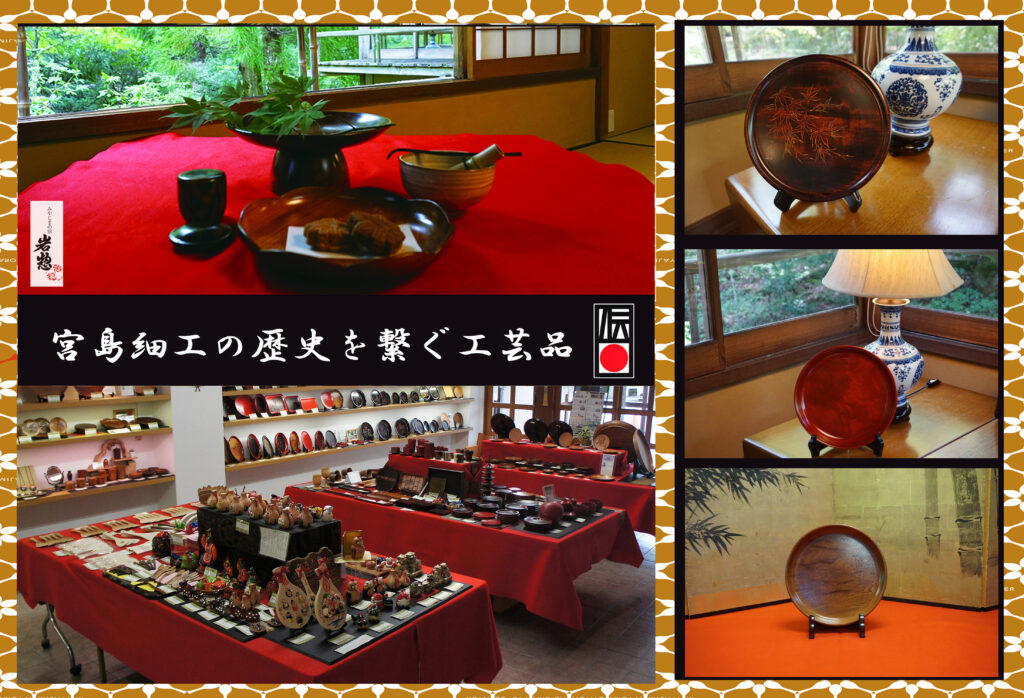杓子
1790年頃に宮島在住の僧誓真が町の土産物として考え、作り方を教えたと伝えられています。明治半ば頃からは日常品としても関西方面へ出荷。
その材質の選び方と技術の巧妙さ、琵琶を模した形の優しさに加え、臭気がなく飯粒がつきにくいと言われ、品質の良さで日本一の生産量を誇っています。
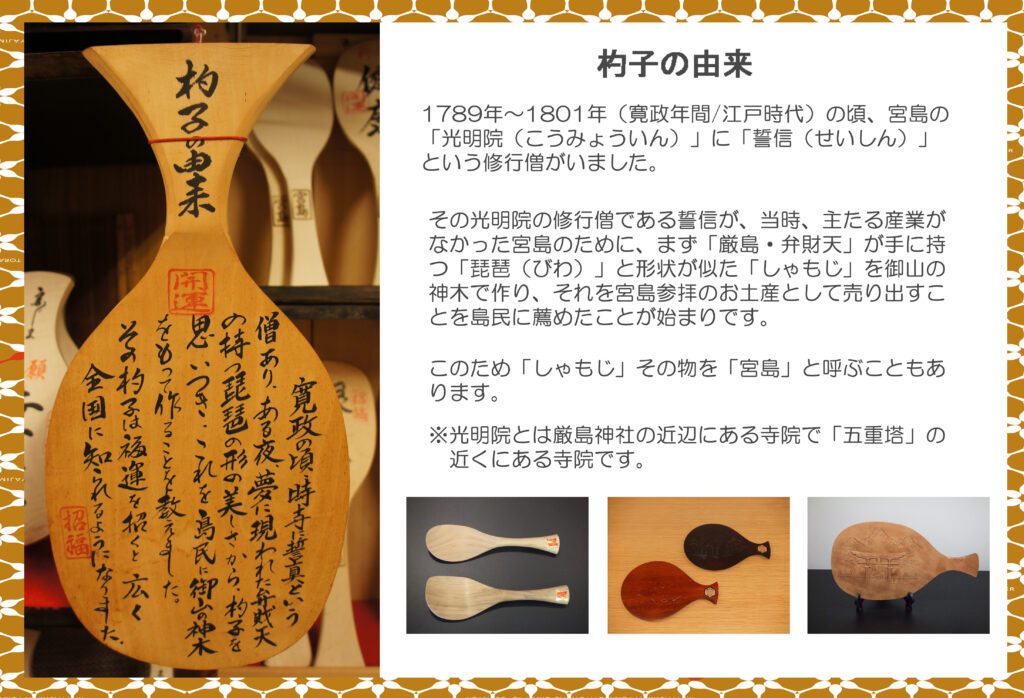
ロクロ細工
1850年頃に小田権六宮島により伝えられたと言われています。
明治の始めより手廻式から足踏式ロクロが開発され、菓子器、重弁当など 種々のものが作られるようになりました。
木本来の持ち味を生かした作品は自然の木目、色調、感触を充分に味わい深いものにしてくれます。
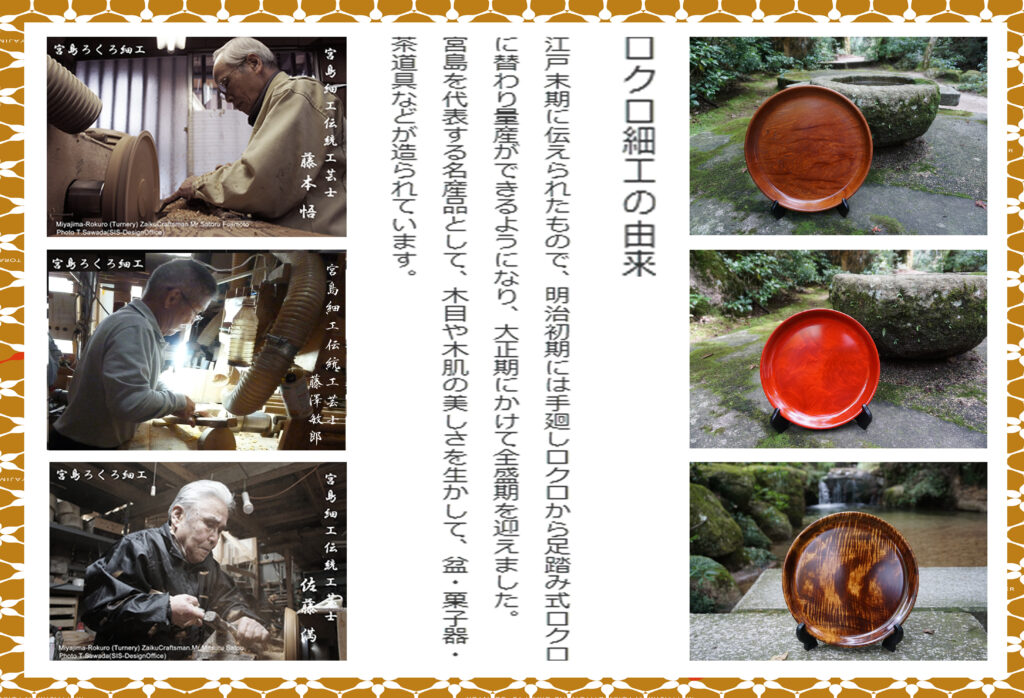
藤本 悟《 雅号: 紅雲 》/ 藤澤 敏郎 /佐藤 満《 二代 木寿 》
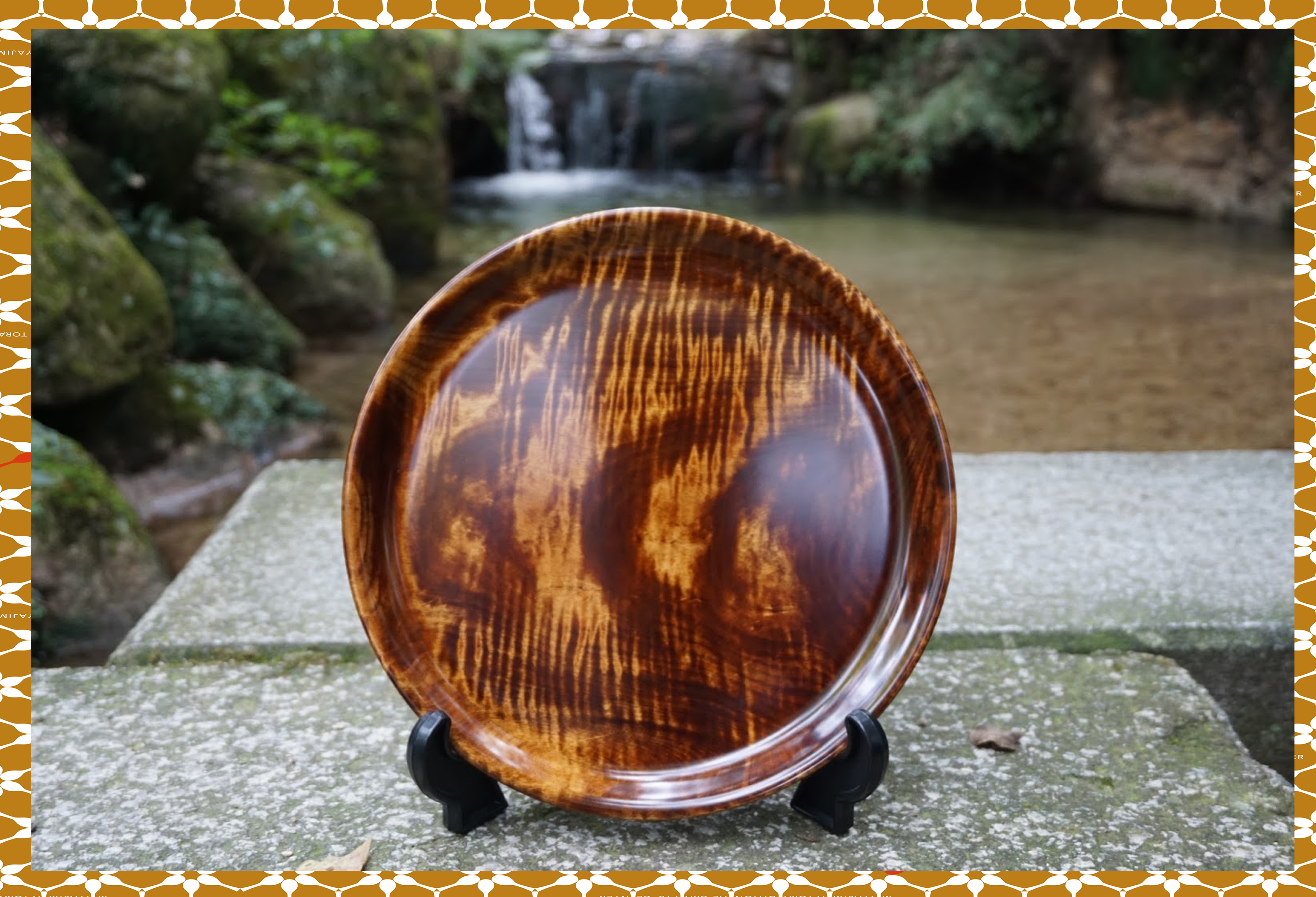
Miyajima-Rokuro Zaiku(Turnery)
This skill is said to have been introduced in Miyajima during the period 1848 to 1858. A manual turner was then used, but in the early-mid Meiji period, a foot step was developed, and the skill of Rokuro Zaiki rapidly developed as other technology evolved. During the end of the Meiji and Taisho periods, nearly 300 turnery craftsmen moved to Miyajima in order to refine their skills.
This skill is passed down even now, and there are a wide range of daily use products such as round trays, sweet containers, tea powder containers, tea cup trays, incense containers, and other artistic pieces of work.
Every product has the warmth of a handmade craft, and this is because people in Miyajima also passed down the feeling of care and love in their preservation of nature and trees. It is not brightly lacquered, no colored, yet it has a unique depth.
The natural grain is the most enduring feature of Miyajima Rokuro Zaiku.
宮島彫
江戸時代の終り頃、甲州(現山梨県)の波木井昇斎によって伝えられてました。
盆、菓子器、衝立、柱などに施されていますが、置物等としての立体物も高い人気を博しています。
木の素地を生かした彫刻で、その技量、作品の美しさは、年月を重ねるごとに風格が出てきます。その趣は格別です。
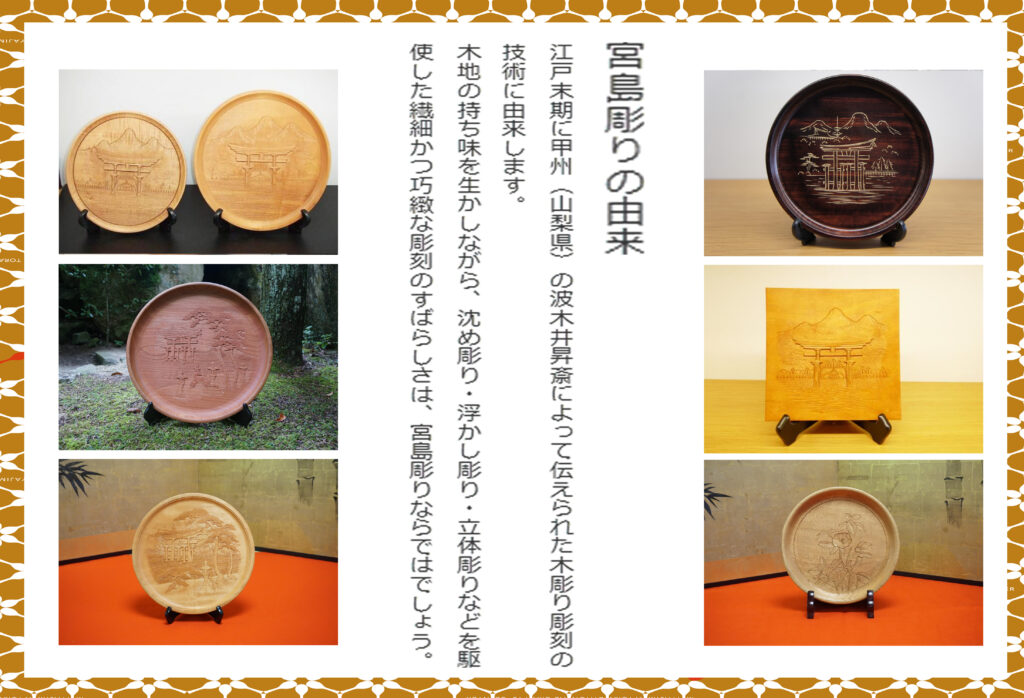

Miyajima-bori(Wood Carving)
The quality of Miyajima Bori comes from the way the chisel is used to carve the wood. The skill when using the chisel either delicately and/or with strength makes all the difference.
The craftsmen place the edge of the chisel against the surface of the wood and move it through rapidly to carve without a rough sketch, gradually revealing the shape of the beautiful Otorii. There are traditional ways of carving to make the work appear three dimensional, and to make the background subtle, yet effective.
It was created by the woodworkers and cabinet makers who visited Miyajima for the construction of shrines and temples. Miyajima Bori started at the end of the Edo period. The wisdom of the ancestors was substantial, and these tips were passed down. The trays with many carvings are practical for daily use and the cups never fail. They are not colored, but they do not get stained by the tea because the craftmen wipe the material with tea in advance.
宮島細工の由来
宮島細工の始まりは江戸時代の終り頃にさかのぼります。
厳島神社建設のために、鎌倉・京都から宮大工や指物師が招かれ、その技術の流れをくむのが現在の宮島細工です。
宮大工や指物師の技術に由来し、嘉永年間(1848~1854)にもたらされたロクロ技術、彫刻技術によって、その技は芸術の域まで高められました。
やがて優れた芸術性を持つ工芸品へと進化した宮島細工は、昭和57年、日本伝統工芸品として認定されました。
ロクロや彫刻といった技術が発展したのは、広島の豊富な森林資源や、木材の集積地である廿日市に近いことなどもその要因と言われています。
宮島細工は、気品ある芸術品として宮島で生まれ、全国で愛され育まれます。
宮島細工の歴史は、伝統工芸作品によって後世へ引き継がれます。